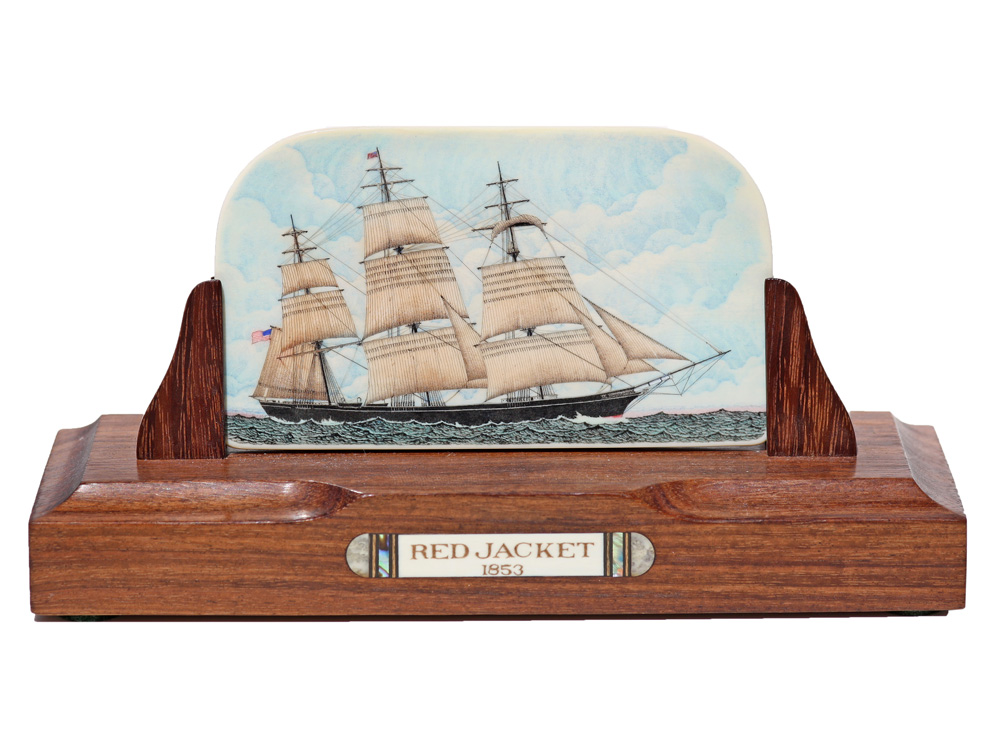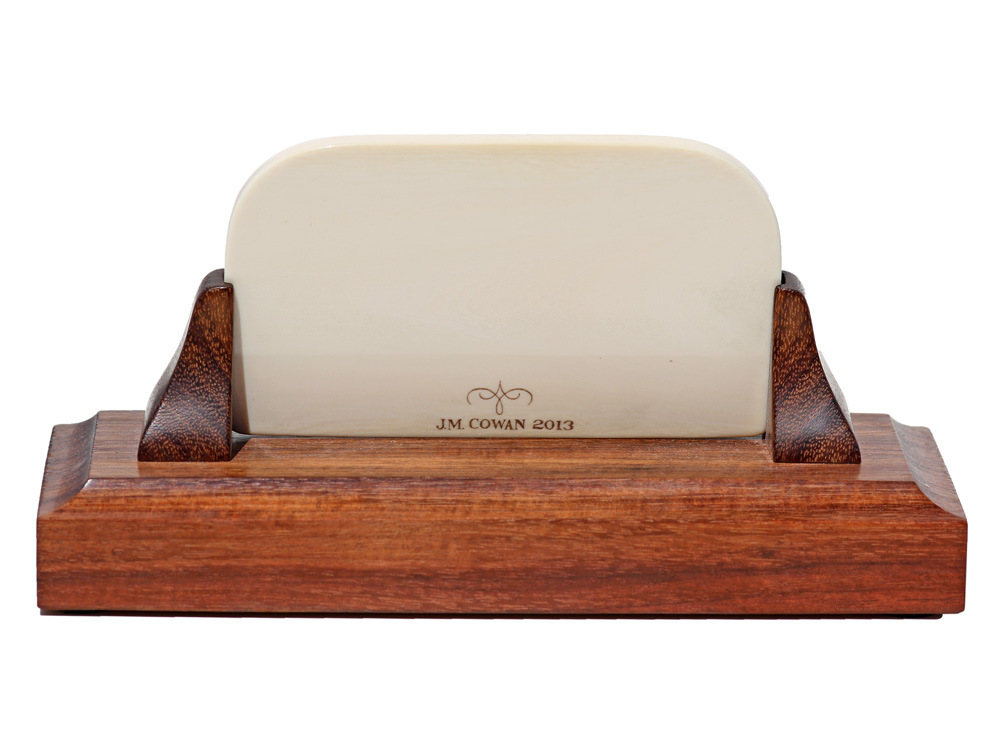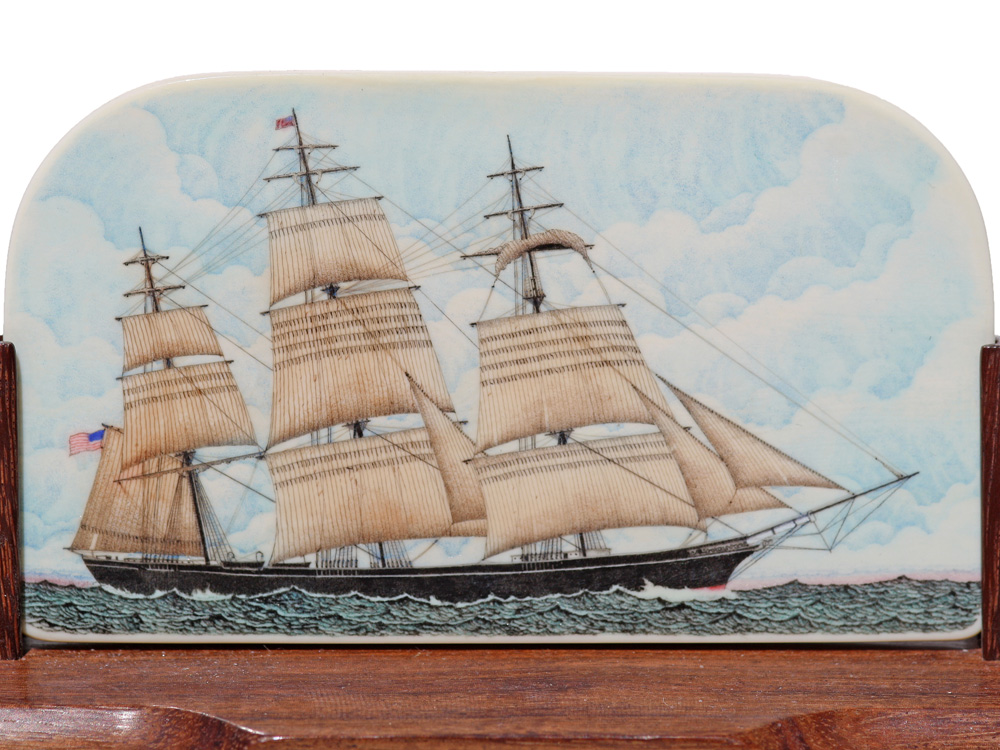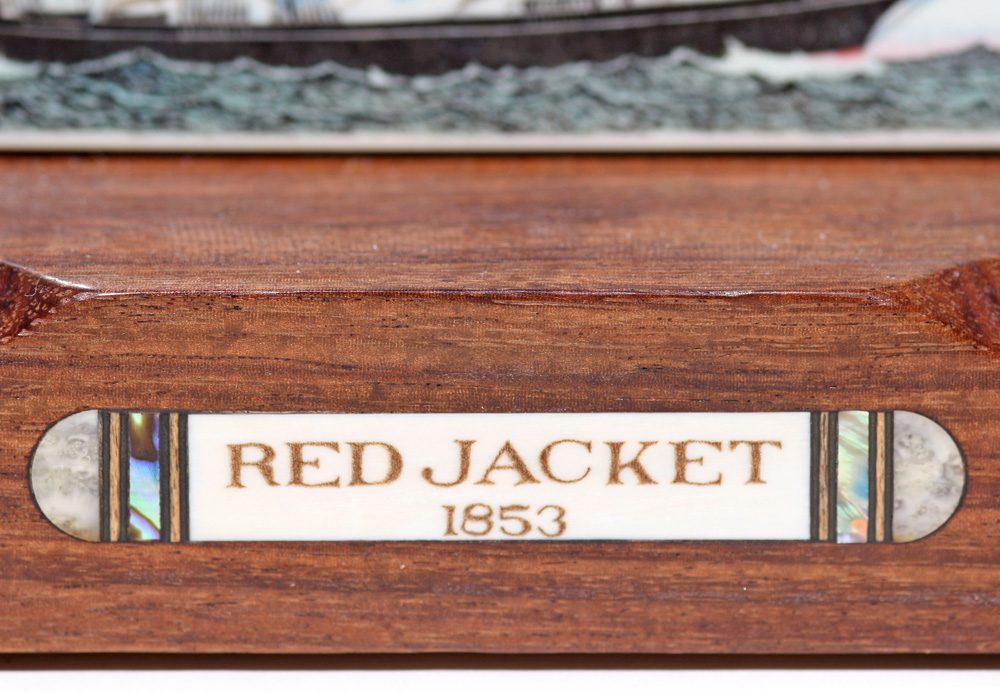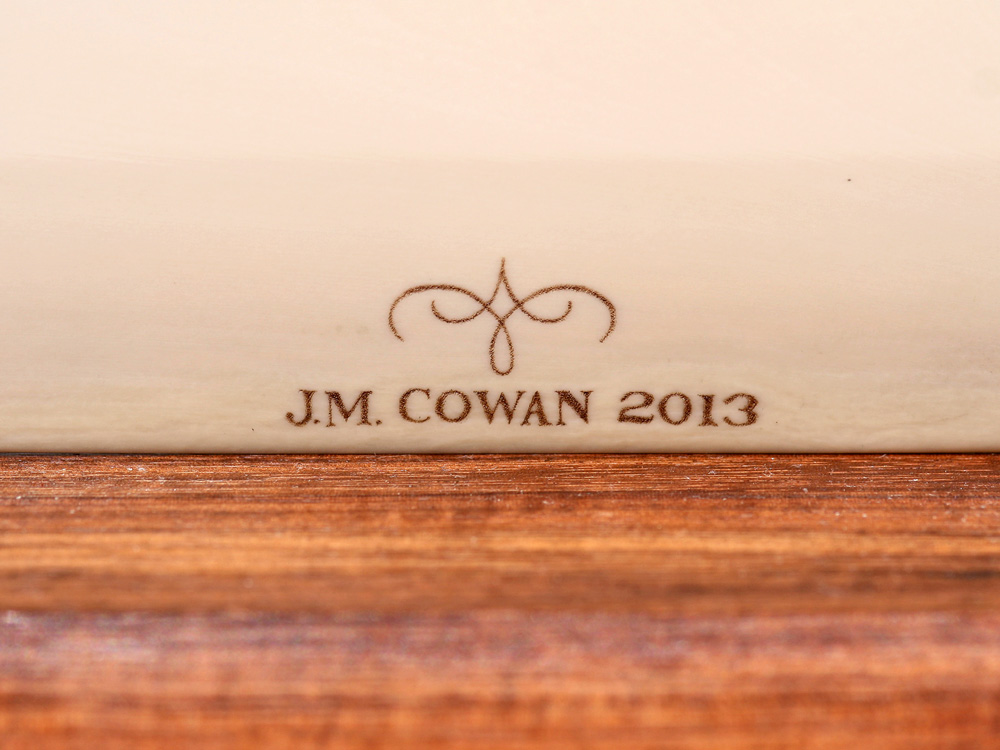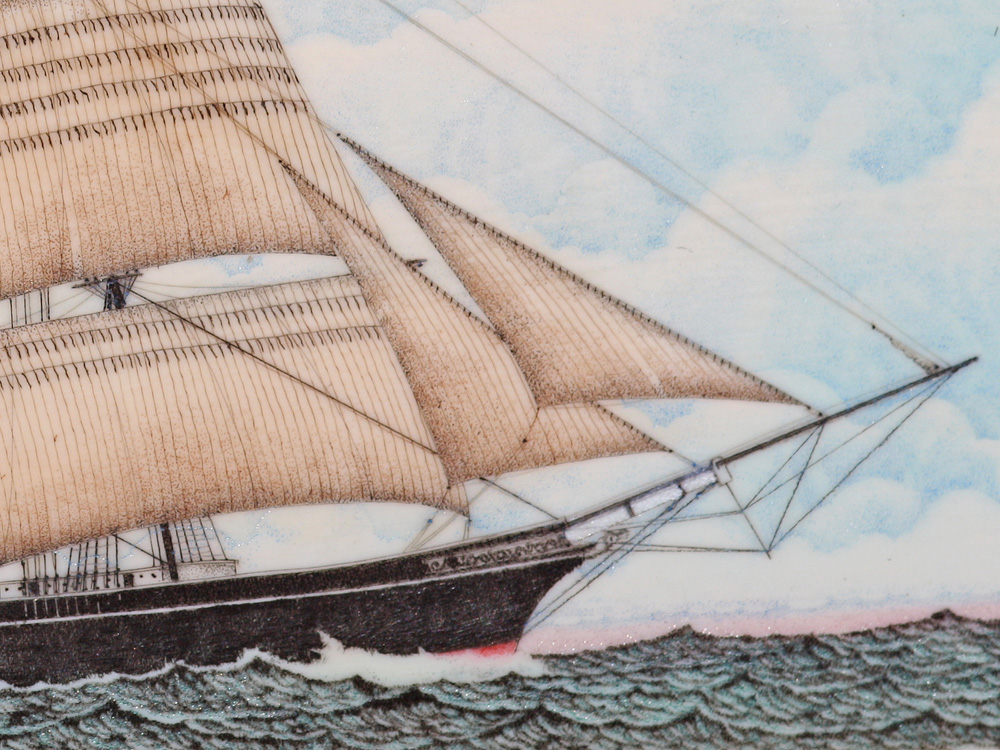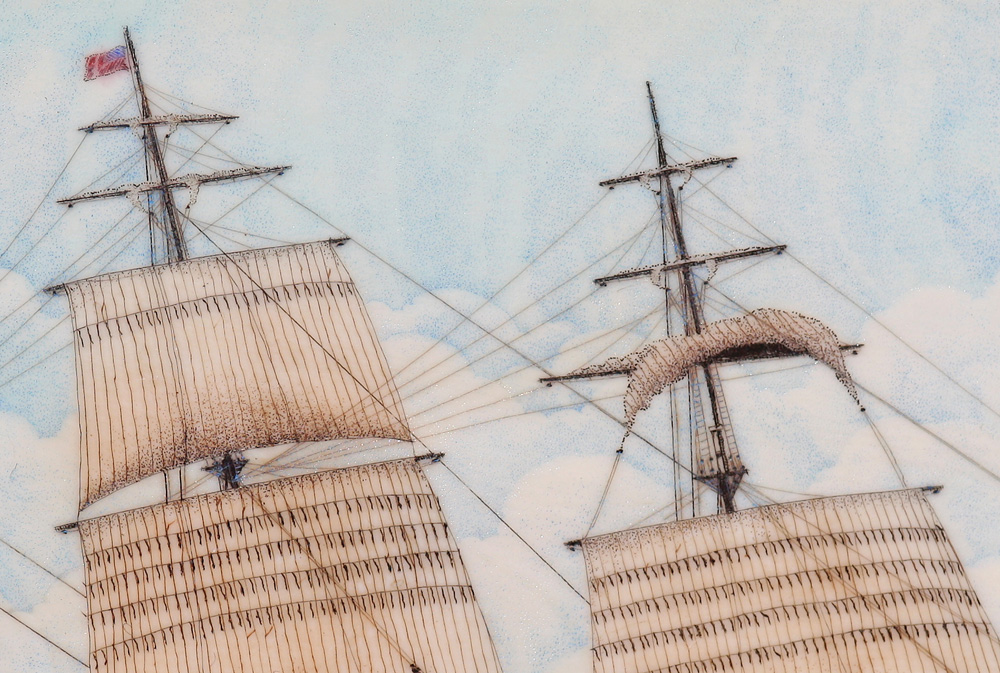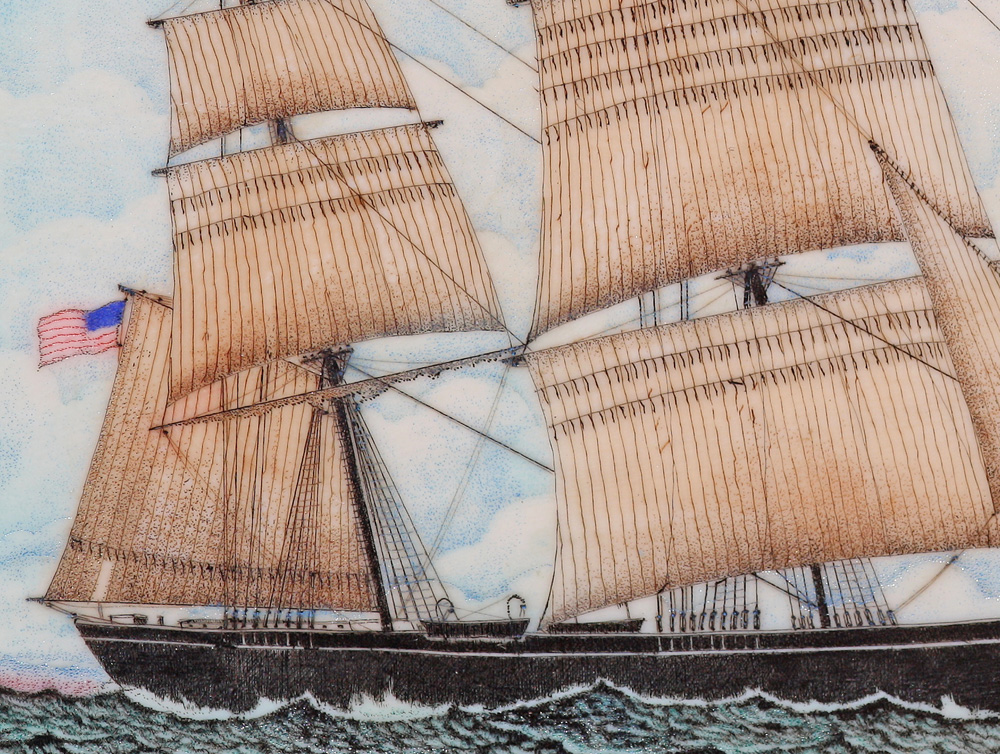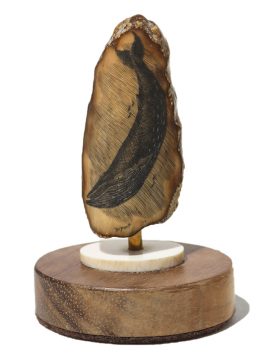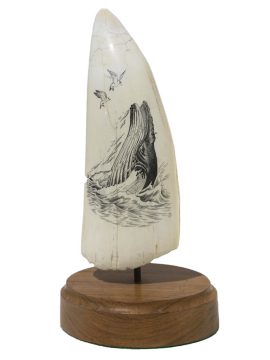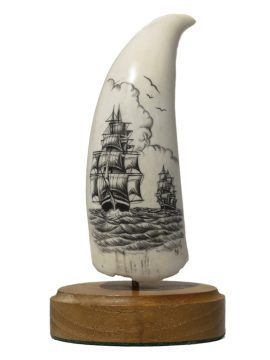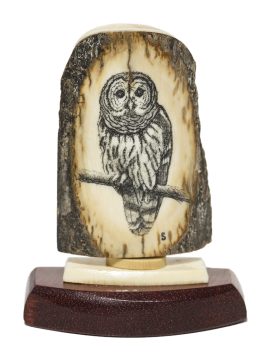The Extreme Clipper Ship: Red Jacket
$2,765.00
Color scrimshaw on pre-ban African ivory by Joel Cowan. Long recognized as the most precise ship scrimshander ever, Cowan’s work continues to impress everyone. His stipple work is in a class by itself. As far as his lettering, no one comes close. Cowan works directly from the actual plans of the ship and is completely accurate in his depiction. Cowan works exclusively for Scrimshaw Gallery and any scrimshaw collection, beginning or long time, should include several Joel Cowan pieces while they are available.
Information from the Internet:
She held the record Atlantic crossing – New York to Liverpool in 13 days, one hour, twenty five minuets. That was Rocket Science in 1854. The clipper ship Red Jacket, named after a Native American Chief of the Seneca Tribe, was unquestionably the sharpest, fastest and best looking of the Maine fleet of sail vessels. Chief Otetiani, also called Sagoyewatha, which in native language means “He keeps them awake,” earned his name for the red coat that he wore, a sign of his allegiance to the British during the American Revolution. He later made peace with the newly formed United States and in 1792 he was presented a medal by General George Washington. Chief Red Jacket died in 1830 on a reservation in Buffalo, New York at the age of 72. However, the sleek vessel that later bore his name was not built on the ways in his native state of New York, she was constructed in the State of Maine.
Red Jacket’s keel was laid in the shipyard of “Deacon” George Thomas, in the North-end of Rockland, Maine near the site of the present day Atlantic Challenge. She was designed by Samuel H. Pook, a naval architect, and was built for the firm of Seacomb & Taylor in Boston. According to “The Clipper Ship Era” by Arthur H. Clark, published c. 1910, she was 260 feet in length, had a 44 foot beam, a draft of 26 feet and weighed in at 2,305 tons.
Red Jacket’s first master, Captain Osa Eldridge, was from a family of seafaring brothers on Cape Cod. Her initial crew, 60 in number, was made up mostly of land-lubbers, and bar room riffraff. Fortunately she had a staff of fine officers. Her maiden voyage departed from Sandy Hook, NY on January 11, 1854. After a stormy trans-Atlantic crossing they passed Rock Light off Liverpool, England in a record time of 13 days, 1 hour and 25 minutes. Due to the rough weather, she only averaged 182 nautical miles a day for the first week, but for the final six days she averaged 353 miles in each 24 hour period. Capt. Eldridge then, refusing the aid of a tug, sailed her up the Mersey River to a Liverpool dock, threw her yards aback and, with precision that brought a roar from the awaiting crowd, lay the vessel alongside the pier head. It was a feat of no small magnitude.
The Red Jacket created a sensation as the public came down to the docks in droves to inspect the vessel’s sleek lines and incredible figurehead and the transom, which also featured an elaborate carving of her namesake. Capt. Elbridge remained with the Collins Lines and turned over Red Jacket’s helm to Capt. Samuel Reid. Eldridge then sailed as Master of the Pacific in the Far East trade until the vessel he was commanding was lost at sea with all hands in 1855.
Red Jacket’s next voyage under Capt. Reid, was from Liverpool to Melbourne, Australia in a respectable 69 days. She made the return trip in 73 days in spite of time lost negotiating the ice fields of Cape Horn. After this voyage she was sold to Pilkington & Wilson, agents for the White Star Line, for a reported thirty thousand English pounds. She continued the Melbourne run carrying passengers and general cargo outbound and gold dust and passengers on the return. When the Australian passenger trade began to slow she was used to carry general cargo in various trades including a run between Quebec and Liverpool carrying timber in the 1870s.
Red Jacket was last sold in 1883 to Blandy Brothers, a Portuguese shipping company in the Madeira Islands. She was unceremoniously stripped of her masts and rigging and spent her last days as a coal hulk. In a storm on December 15, 1885 she parted her moorings and was wrecked ashore. A few parts of the Red Jacket were saved, but there isn’t any known record of the salvage of her striking figurehead or the ornate and garish array of stern carvings. The Red Jacket, pride of Rockland’s shipwrights, a true “Greyhound of the Sea,” had a short 32 years of sailing. She was surely a victim of the bottom-line, as more cost effective ships were being put into service. Still, the skilled boat builders of the Rockland area deserve much credit for producing such a seaworthy and able craft. Her record for the fastest trans-Atlantic crossing by a commercial sailing vessel remains unbroken to this day, more than 150 years after it was established.
Notice:
This scrimshaw is done on pre-ban African ivory. Since the passage of the CITIES Treaty in 1973, there has been no African ivory brought into the U.S. However, ivory that was in the U.S. prior to 1973 can be legally sold and shipped within the U.S. However, new legislation taking effect in 2016 restricts pre-ban African Ivory from being shipped interstate. It can only legally be shipped intrastate, (within the state). All of our pre-ban ivory is located with our associate in the state of Florida. It can be purchased directly from our website and shipped only to an address within the state of Florida. If one has a relative, trusted friend or business associate within the state of Florida, we can ship to that specified address in order to comply with the new Federal legislation. The scrimshaw can then be forwarded it to you and everyone complies with the law. Any questions email or call us.
Out of stock

